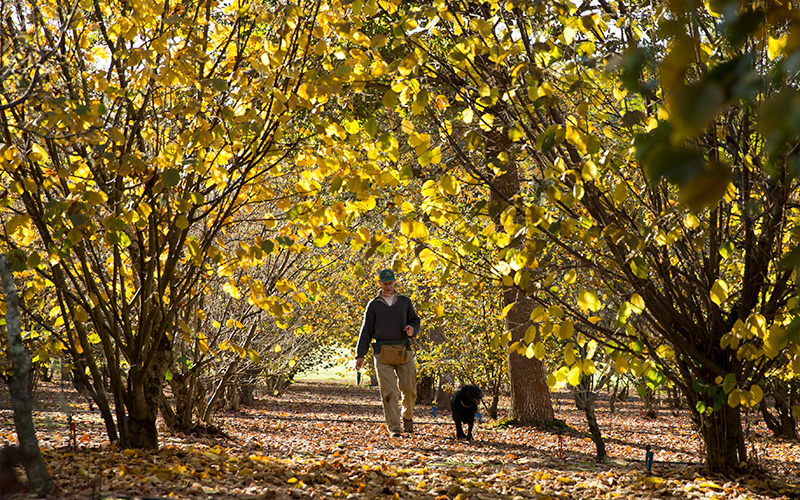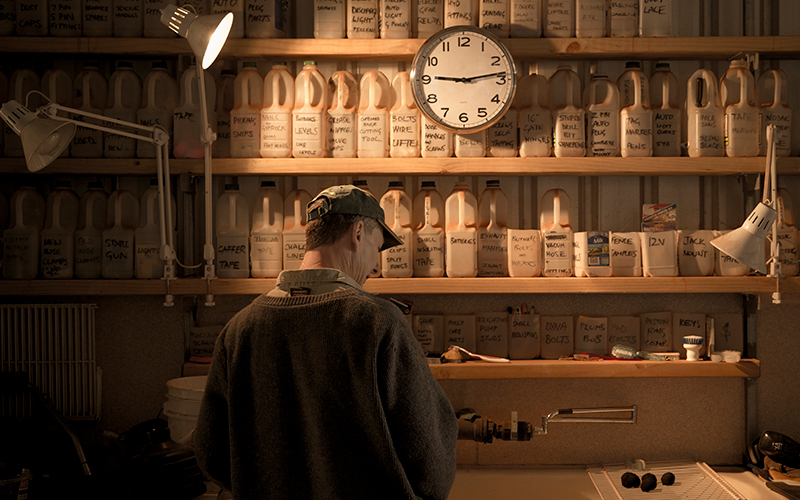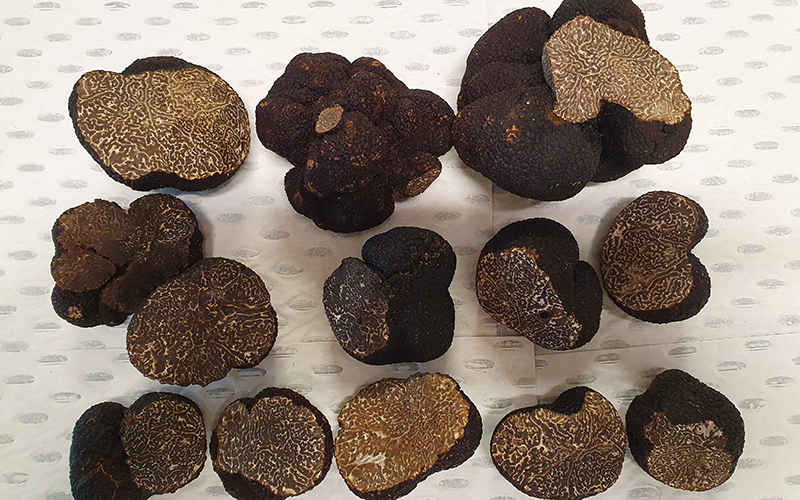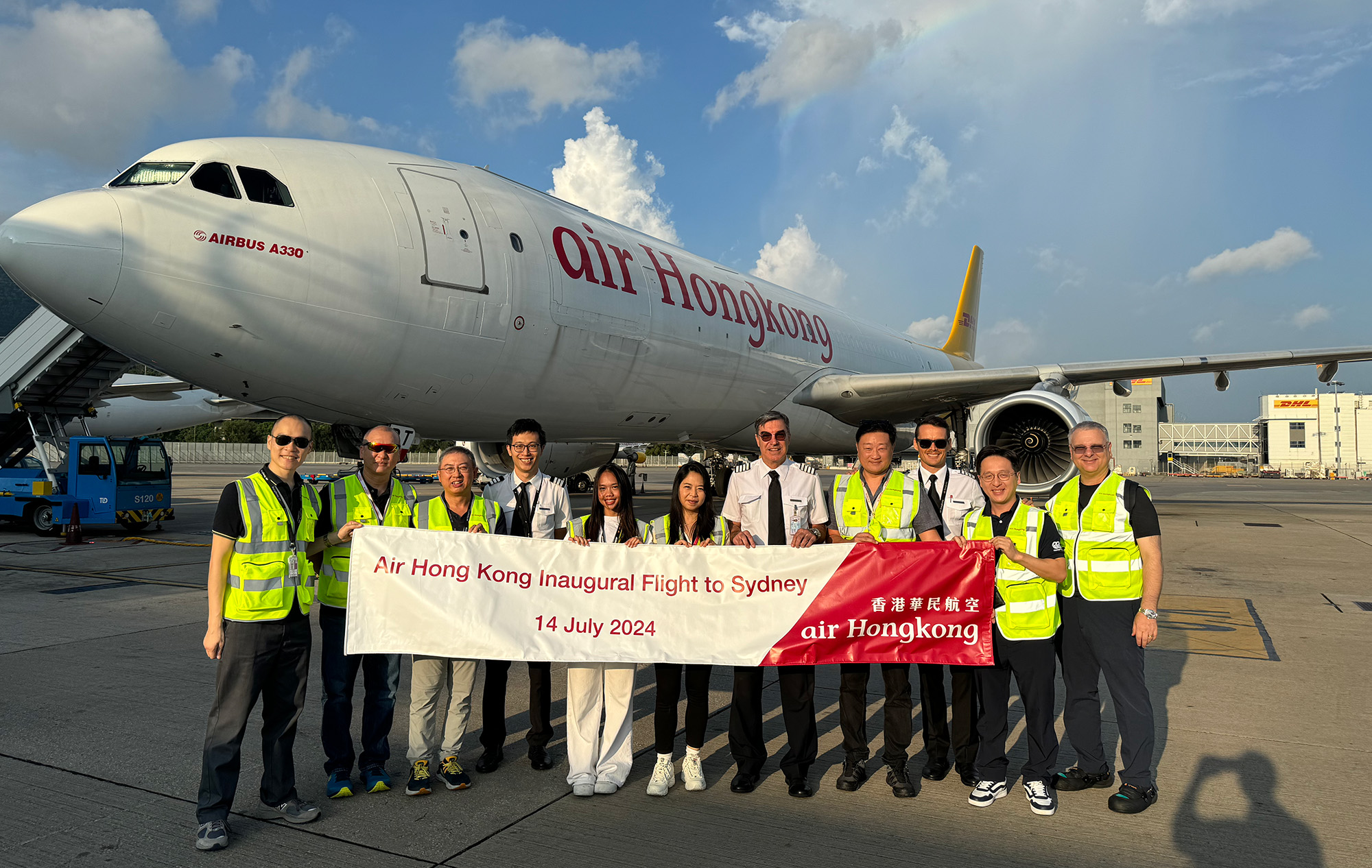‘I mean, we couldn’t exist without airfreight.’ So says, Dave Pottinger, exporter and farmer, speaking from his 100-hectare property near Manjimup in South West Australia, some five hours south of Perth.
While 20 of those hectares are too steep to farm, 12 are dedicated to a slightly surprising crop – truffles. And not just any old truffle, but fine-quality black truffles, Tuber Melanosporum, better known after the region of southwestern France where they grow as Périgord truffles.
These black winter truffles have an intense aroma, and they are very popular with high-end restaurants the world over. However, they are seasonal and, up until recently, if you lived in the northern hemisphere and you missed out, you just had to wait until next year.
But no more. In the late 1990s, pioneers in Australia and New Zealand started experimenting with ‘inoculated’ trees and found to their surprise (and that of growers in Europe who had predicted it would never work) that truffles could, eventually, be successfully grown in the southern hemisphere.
Breaking new ground
Dave Pottinger, who runs Pottinger Truffles exporting his and other farmers’ truffles from around the region is a case in point. Back in 1999, encouraged by the progress made by a small number of growers in New Zealand and Tasmania, he converted some land that couldn’t be used for wine grapes, his farm’s dominant crop back then, for truffles. This meant planting young hazelnut trees that had been ‘innoculated’, or more accurately, come into contact with truffle spores, and waited – even having been told that his farm was too close to the sea and too low to sea level to ever be successful. ‘I guess farming in general is a bit of a gamble, and we’ve always been pretty interested in trying new things,’ he says.
Five years of waiting later, the farm produced its first truffle, in fact seven to eight kilos, adding to the small but growing industry in the region, which has somehow become the most productive area in the world for growing black truffles. From a single truffle after five years, trees become most productive after 12 years, and the crop is doing very well. ‘Production in the Southwest of Australia has been very high and way above what they produce in Europe traditionally,’ he adds.
It was apparent from the outset, that should truffles grow successfully, this was always going to be an export product. ‘How can I put it,’ says Pottinger, ‘truffles go where the money is, where the Michelin-starred chefs are, and Australia doesn’t do so many Michelin stars.’
Ouch. But, there really isn’t a big domestic market, maybe a tonne all in. ‘It annoys me that Australians don’t get truffles,’ adds Pottinger. ‘They will in time, but the market is overseas, we export everything we handle.’

In-season, out-of-season truffles
For chefs in Europe, North America and the rest of Asia, with the Australian black truffle season running counter to that of the northern hemisphere, it means that now black truffles have more availability. But the real problem is how to get them there. Pottinger Truffles and many of the other companies in the region work with VIP Freight, based at Perth Airport, which has had to work out how to deal with this new export.
Truffles almost redefine the idea of a perishable product. Imagine a product that retails for around HK$13,500 per kilo (for the best ‘extra’ grade truffles) but loses three per cent of its mass every day, before turning into an odourless woody husk in around two weeks. They are also, despite their knobbly appearance, very delicate and have survived a year in shallow soil, often lovingly covered by Pottinger’s family with additional soil to reduce attacks from various insects with their own gastronomic leanings before it’s time for the truffle dogs to snuffle them out.
Peter Thorburn, Managing Director of VIP Freight, first got involved in 2003 with discussions with farmers about how best to export this delicate and valuable cargo to the other side of the world while preserving its quality. The answer came from another tuber – the common all-garden potato.
The potato trials
‘We discussed the export potential, and how we were best going to manage and retain the quality,’ he says. ‘In that process, they said a potato is about the same density as a truffle, so can we do some tests with your chiller and facilities to work out how best to package them.’
From those trials both forwarders and farmers worked out that the truffles needed to be in their own type of temperature-controlled environment, and to be dispatched to market as soon as possible. ‘Within 24 hours ideally,’ adds Thorburn. As for packing, truffles are bagged and packed in polystyrene esky boxes with ice packs, wrapped in silver foil. ‘In our first year, 2003, we exported 60 kilos and now it’s between eight and 10 tonnes depending on the harvest, which will be from around 10 farms.’
The cool chain is essential throughout. Fortuitously, there is a daily refrigerated truck bringing produce from Manjimup to the local market and for export from Perth, which means that the truffles are in a temperature-controlled environment right from that point.
‘Our job then is to receive the truffles in the cool chain and then to process the export documents and choose the airlines,’ says Thorburn. ‘That’s not only for the shortest route to the destination, but also for the quality of service. And Cathay Cargo came in because we were based in the same office in the same terminal that Cathay Cargo left from, which gave us the opportunity to cut down the handling time. And obviously, they are direct to Hong Kong with excellent services through to Europe and the US, which is one of the biggest markets.’

Cathay Fresh assurance
The truffles are shipped using the Cathay Fresh solution to preserve quality, but also because it’s critical that shipments are flown as booked, as Pottinger explains. ‘At the other end, you have a distributor who’s relying on shipments getting there,’ he says. ‘They’ll have restaurants lined up to buy truffles because he has to set them up before it comes in. It’s not as if he gets a shipment and sits around and says, “Okay, now how are we going to sell this?” The chefs are waiting, and they’ve got their menus predefined. It’s critical that it gets there. If it doesn’t, it’s an absolute disaster, not only for us, but for him, and for all the restaurants, so for us, transport quality is critical. We don’t want issues not just because the stuff is expensive; but because you have a line of people depending on it.’
Truffles are expensive, with a 20kg box probably worth around AU$25,000 (HK$128,500), so for Pottinger reliability is important as is the assurance of quality even if it comes at a cost. ‘It’s well worth it,’ he says. ‘VIP Freight pays good attention to things like phytosanitary issues or sorts. Everything goes through smoothly, and they choose the airlines that they trust.’
And so it is that Cathay Cargo ships high-quality black truffles from a surprising place to high-end restaurant kitchens around the world. For Pottinger it’s existential food for thought. ‘If we didn’t have airfreight, we’re nowhere, we don’t exist.’









